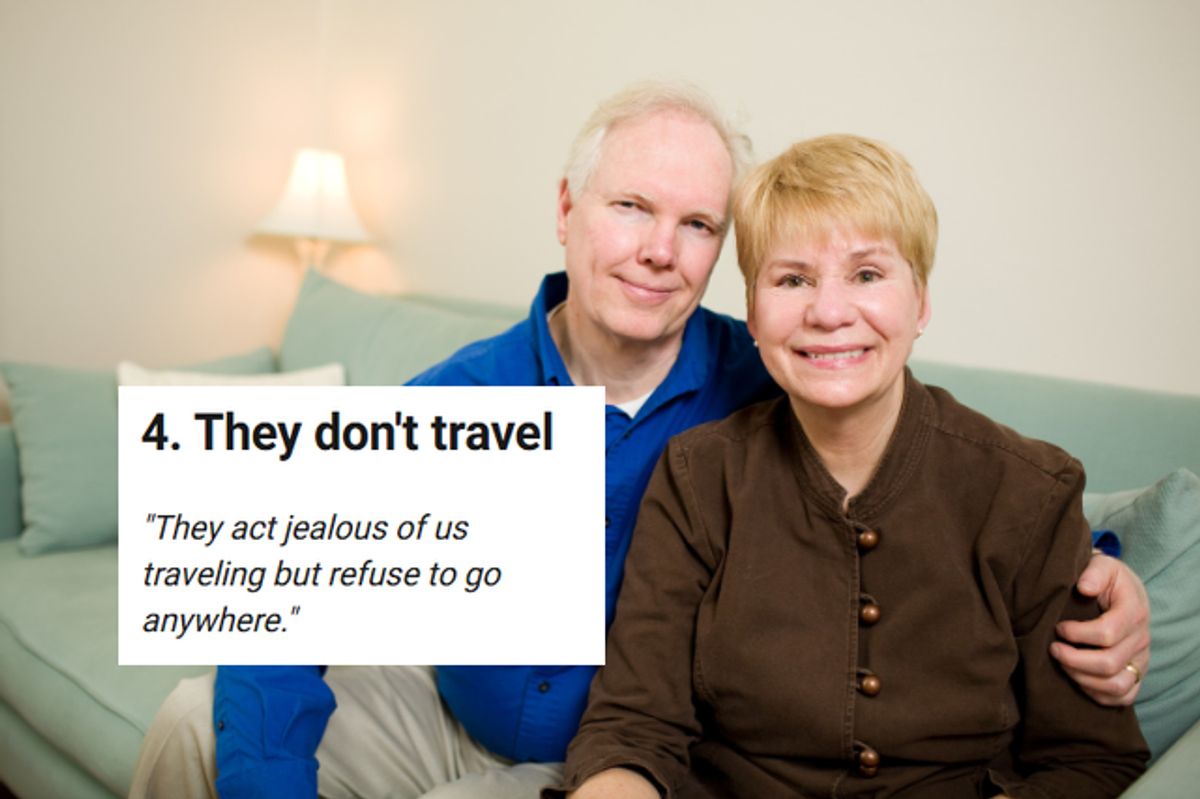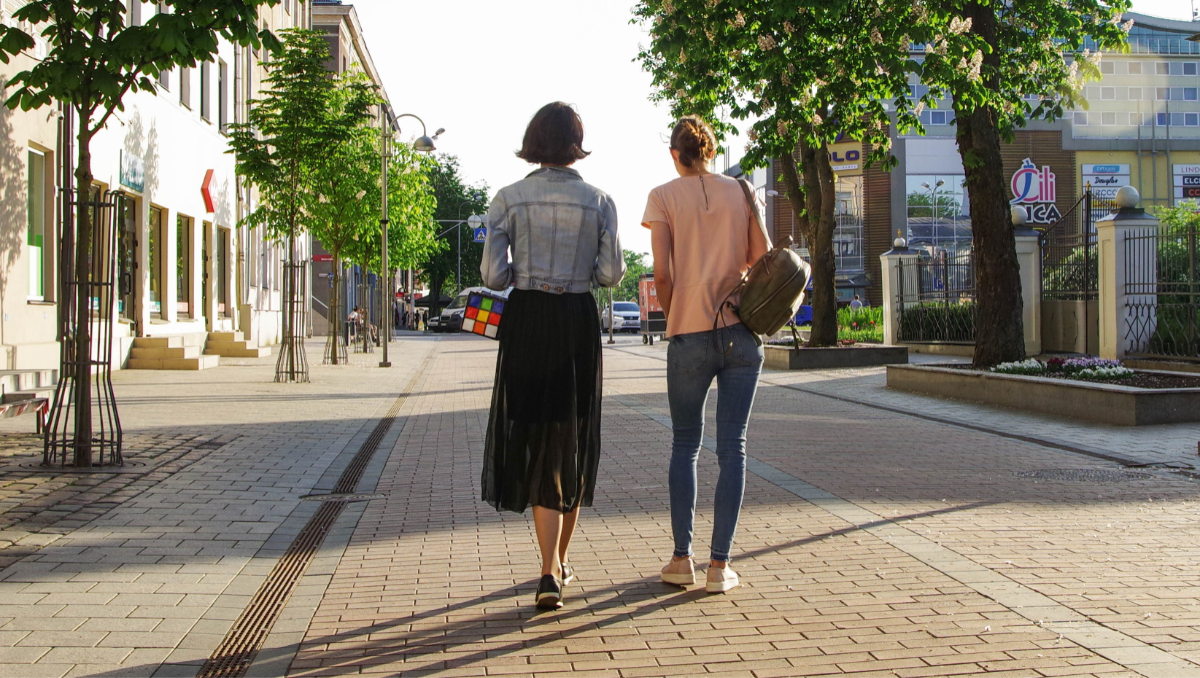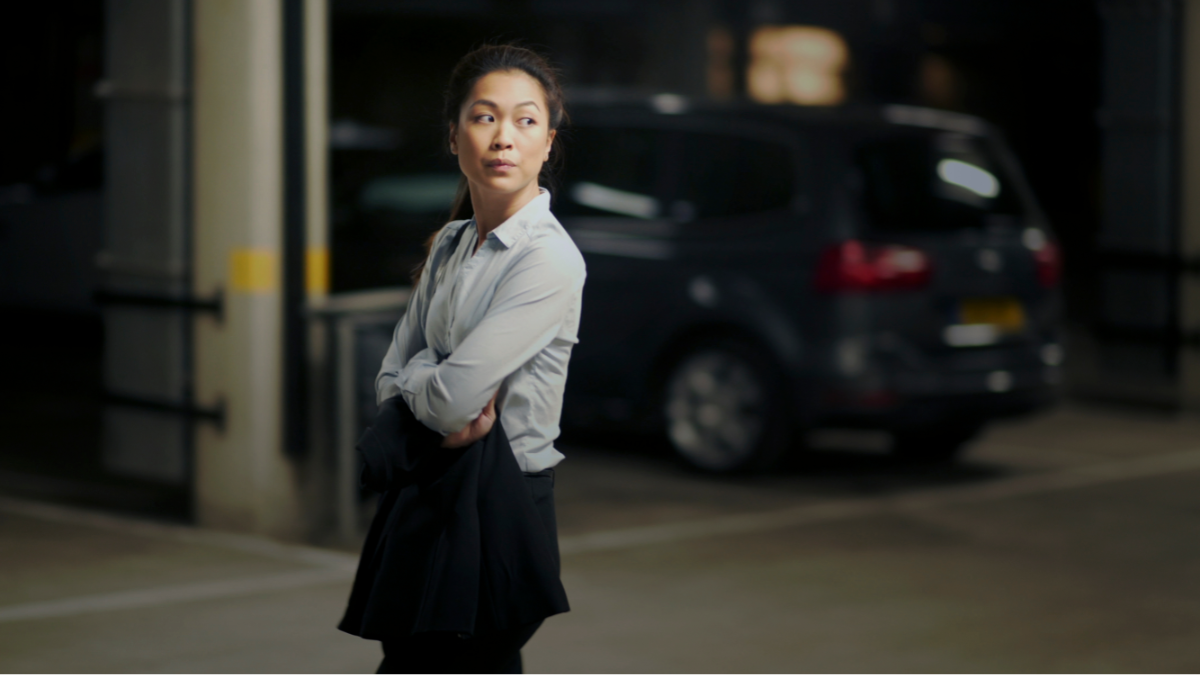Guess what day it is...
Hump dayyyyyy! GIF via Geico.
That's right, kids. It's Wednesday! Hump day. The fulcrum on which your whole week turns. Or pivots. Maybe tips? Whatever fulcrums do.
The point is, you made it. Monday is a distant memory, and the weekend is becoming a faint but enchanting glimmer in your future. It's all downhill from here.
If you haven't been having a good week, though, today might just feel like another crappy day. Don't worry. It's not too late to turn this week from bad to good. In fact, there are a few simple things you can do to reverse the cycle.
Here are nine science-approved ways to turn your week around.
Because we can't all have the naturally boisterous excitement of a workplace camel.
1. Move to a different work spot. Even if it's just for a minute.
Changing up your scenery does amazing things for your mood. When you're stuck in a rut, changing your environment sends a signal to your brain that the current cycle isn't going to continue.
"Drive around, take a walk, or just go to a different floor. The key is to put yourself in a different physical location,” says Annie McKee, founder of the Teleos Leadership Institute.
Don't worry, he just works better with his eyes closed. Photo via iStock.
If there's truly no way to work from a different spot, just get away from your desk for a minute. Take a quick walk outside or say hi to someone in a different office. It'll help you to not feel trapped.
2. Stand like Wonder Woman. No seriously.
It may sound weird, but there's research to suggest that so-called "power poses" can actually improve your mindset. They help you feel more in control of your world and can boost your confidence.
Which is perfect if a stack of paperwork has left you feeling helpless, or if you made a mistake that got you some flak earlier in the week.
Costumes not included. Photo by Matthier Alexandre/AFP/Getty Images.
"Body-mind approaches such as power posing rely on the body, which has a more primitive and direct link to the mind, to tell you you're confident," says Amy Cuddy, a Harvard Business School professor.
Basically, your mind listens to your body. So standing like a superhero can start to make you feel like one. And who better to knock this day out of the park and into the stratosphere than a superhero?
3. Forgive yourself for your mistakes.
Forgiveness — especially self-forgiveness — is a pretty great thing.
You've seen the posters: "We all make mistakes," "No one is perfect," "You're a snowflake," etc. The fact is, if your mistake didn't make the world crash and burn, it's probably OK to let it go.
"When resentment is interfering with your life, it's time to forgive yourself," says Sharon Harman, a clinical trainer at the Caron Foundation. "So many people have a constant, critical voice in their heads narrating their every move."
Letting the little things go is way better than your four different sizes of coffee. Photo via iStock.
And it's that voice that could be dragging down your whole week. Don't let the mistakes of Monday be the grumpiness and lethargy of Wednesday. Let it go. Whatever it is, everyone else has probably forgotten about it by now.
Except for Karen. She remembers everything.
4. Prioritize and schedule. Your brain loves that.
If you feel like you've already lost control of your week, it's time to take a step back. Things are hardly ever as bad as they seem.
Ask yourself: What actually needs to get done today? What needs to get done before the end of the week? What can be back-burnered for a later date? Figure all that out and start scheduling your time.
1. Pick up glasses. 2. Put on face. 3. Finish to-do list. Photo via iStock.
Also, make a to-do list. Your brain is a huge fan of to-do lists, and they can make you more efficient at tackling responsibilities.
"Even when you are overwhelmed with tasks, the most important thing you can do is make a plan on how to get them done, starting with a to-do list," writes Jonathan Becher. "Simply writing the tasks down will make you more effective."
5. Socialize with someone. Anyone.
Little-known secret: We need human interaction to feel OK.
If all you've been doing is working, you may not have even noticed that your social life has slipped. Talking to Greg at the water cooler about last night's "Top Chef" doesn't really count, either. You're still at work!
Go out and cut loose. You don't have to do keg stands and Jägerbombs or anything (unless you want to). Grab dinner or drinks with a friend. Or just walk around the park with someone.
"Hey guys, wanna get together on my roof and HIGH-FIVE THE SUN?!" Photo via iStock.
Have a significant other? Take them on a date! Been married for 25 years and think you've outgrown dates? Yeah ... ask your partner how they feel about that.
A little midweek socialization can lift your mood enough to glide through right to Friday. Pro tip: Don't look at your phone the whole time.
6. Do something nice for someone.
You hear that? It sounds like two birds. Here's your one stone: Performing a simple act of kindness can be uplifting for you and totally make someone else's day.
Whether it’s buying a coworker coffee, paying a toll for the car behind you, or even just complimenting someone’s sweater, those little actions will make someone smile and, in turn, make you a happier person.
This guy either just got a compliment or is currently watching a very tall clown. Photo via iStock.
“People who engage in kind acts become happier over time,” says psychology professor Sonja Lyubomirsky. “When you are kind to others, you feel good as a person — more moral, optimistic, and positive.”
Why not improve your week by improving someone else's?
7. Treat yo self. Take some "you" time.
If you have a full-time job and a family, chances are you spend a LOT of time trying to make others happy.
When was the last time you did something just for you?
"I do think it’s important to take time for treats, because treats help us to feel energized, restored, and light-hearted," writes Gretchen Rubin. "Without them, we can start to feel resentful, depleted, and irritable."
The scented candles are to mask the farts. Photo via iStock.
So take a bath with those expensive scented candles. Watch that zombie movie you know your wife will hate. Take a run through your neighborhood, or get a nice cappuccino. Whatever does it for you, make some time to do it for you.
8. Listen to your favorite song. No, really, do it right now.
The fact that music can boost your mood has been well-documented and well-researched. It also shouldn't be that surprising — nothing feels better than listening to the music you love.
You can also increase productivity by turning on your computers! Photo via iStock.
If you've got the blues (oof), listening to music can make you feel totally jazzed (yikes) and ready to rock (I'm so sorry) the rest of your day. Which will get you all set up for a better week.
Plus, your favorite song is awesome. That's why it's your favorite, right?
9. This one might be obvious: Pet an animal.
Ever wonder why you love petting animals so much? Well, same reason you like pretty much anything. Brain chemicals!
Petting animals releases oxytocin, which is a feel-good hormone that improves mood while reducing stress and anxiety.
"Sorry your week was so RUFF. Get it? I'm a dog." Photo via iStock.
If you have a pet, today is a good day to force them to cuddle with you. If you don't have a pet, don't worry, there are options. You can either recruit someone else's pet or just follow a random dog down the street. Eventually you'll get close enough to pet them.
If the dog's owner gets mad at you, just tell them you're doing it for the oxytocin. Tell them you're having a bad week and this is how you plan to turn it around. You can even tell them it's an act of kindness on their part! Which will make their day better too! Remember the two birds?
It's not too late to turn this bad week into a great one.
The key here is that you shouldn't give up. We all have bad days, bad afternoons, bad hours. Those are temporary states, and they don't define you.
If you can break out of a mental funk, you can become more productive, more energized, and happier. Life's too short to wallow in the bad times, and it's definitely too short to have a bad week.
You're the captain of the U.S.S. Workweek. You can turn it around whenever you want.



 Baby boomers are a fascinating and endearing group.
Baby boomers are a fascinating and endearing group.  An average boomer's basement. Photo by
An average boomer's basement. Photo by  They love to scare their adult children with dramatic texts.
They love to scare their adult children with dramatic texts.  Boomers love to talk about random people who have died, and large-scale tragedies.
Boomers love to talk about random people who have died, and large-scale tragedies.  Boomers love staying at home for no good reason.
Boomers love staying at home for no good reason.  If it can't be held in their hand, they don't trust it.
If it can't be held in their hand, they don't trust it.  They'll keep food for way, way too long.
They'll keep food for way, way too long.  They still hold onto outdated gender stereotypes. Photo by
They still hold onto outdated gender stereotypes. Photo by  This is the generation that invented TV as background noise.
This is the generation that invented TV as background noise.  They love intensely tracking a thunderstorm via The Weather Channel
They love intensely tracking a thunderstorm via The Weather Channel 
 Tony Trapani received the most important letter of his life, but he didn't see it for 50 years Photo by
Tony Trapani received the most important letter of his life, but he didn't see it for 50 years Photo by  Tony and Samuel didn't waste time thinking about what might have been if he'd seen the letter earlier. Photo by
Tony and Samuel didn't waste time thinking about what might have been if he'd seen the letter earlier. Photo by 



 Women walking down a street.Image via Canva Photos.
Women walking down a street.Image via Canva Photos.  Woman aware of her surroundings in a parking garage. Image via Canva Photos.
Woman aware of her surroundings in a parking garage. Image via Canva Photos.